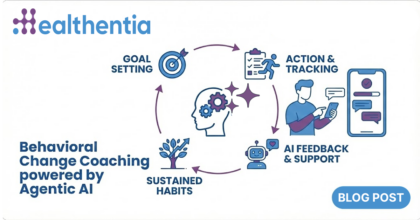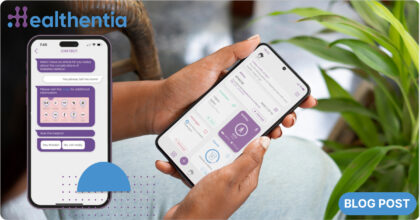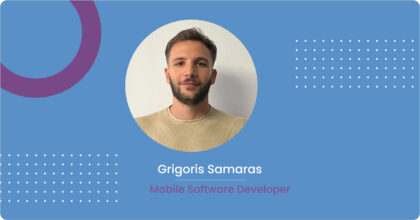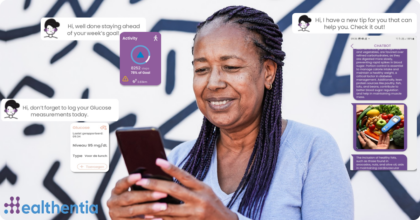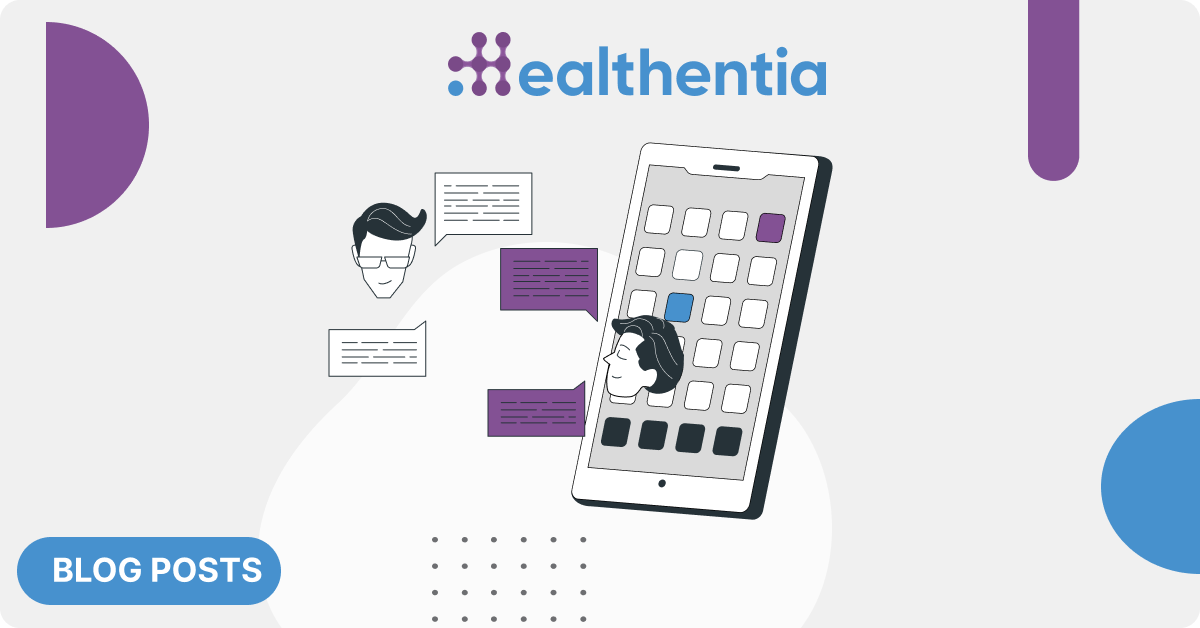
While dialogue selection is the most important task of Healthentia’s behavioral change framework, keeping these dialogues personalized and interesting is also important in the long run. Dialogues need to be both to the point, to persuade the patients to go through them and have an impact, but also need to be interesting for the patients to keep working with them. Setting dialogue selection aside, in this blog post we discuss the two features of Healthentia dialogues that make them interesting to their recipients. We also mention a third, experimental feature based on LLMs, that is still on a lab level.
Healthentia dialogues are personalized with data from the patients. While the dialogues are selected when certain conditions arise, the content delivered is augmented with actual patient data, which could be simple – for example – static pieces of information like the patient’s name or sex. They can also be some personalized goals set for the patient by a doctor. Finally, they can also be the results of statistics on some data of the patient, like the average steps walked in the past week, or the frequency red meat is consumed in the past month. This way actual patient data can be compared to the personalized goals, while the patient is addressed by name.
Healthentia dialogues allow patients to voice their decisions and affect to some degree their therapy. While input variables augment dialogue nodes with data from the patient receiving the dialogue, output variables allow the patient to communicate some intent back to Healthentia. Such output variables can be simple feedback on whether the patient considered the dialogue useful. Or they can carry the result of some negotiation about a goal the patient has difficulty reaching. Some output variables are just stored to be part of the patient’s data, while others trigger processes that change elements of the therapy. An example of output variable creating new data is the feedback, with the dialogue selection utilizing accumulated feedback. An example of output variables triggering processes are the negotiations of goals or frequency of contact with more dialogues.
Future Healthentia dialogues can have dynamic nodes generated by LLMs. At a lab level, we experiment with two ways to add dynamically generated nodes to the dialogues. On the one hand, patient data summaries can be created using LLMs. On the other hand, LLMs can present data from reference material. In both cases, the advantage of using LLMs over manually creating the text is that the LLM text is quite variable across repetitions of the dialogues. The text variation has to do with the tone of voice requested, the data at hand and the inherent variability of the models themselves. Data summaries are simpler to create, utilizing the expressive power of a trained LLM. Selecting and presenting material from a reference library is more involved. While the expressive power of LLMs is still employed, the library of reference material is also set up and analyzed, while the LLM is restricted to get information from this library alone.
Employing the existing features in the dialogues and looking ahead to more dynamic options, Healthentia can keep the patients interested, since the dialogues are dynamic, personalized and offer two-way exchange of information, both from Healthentia to the patient, but also from the patient to Healthentia.
